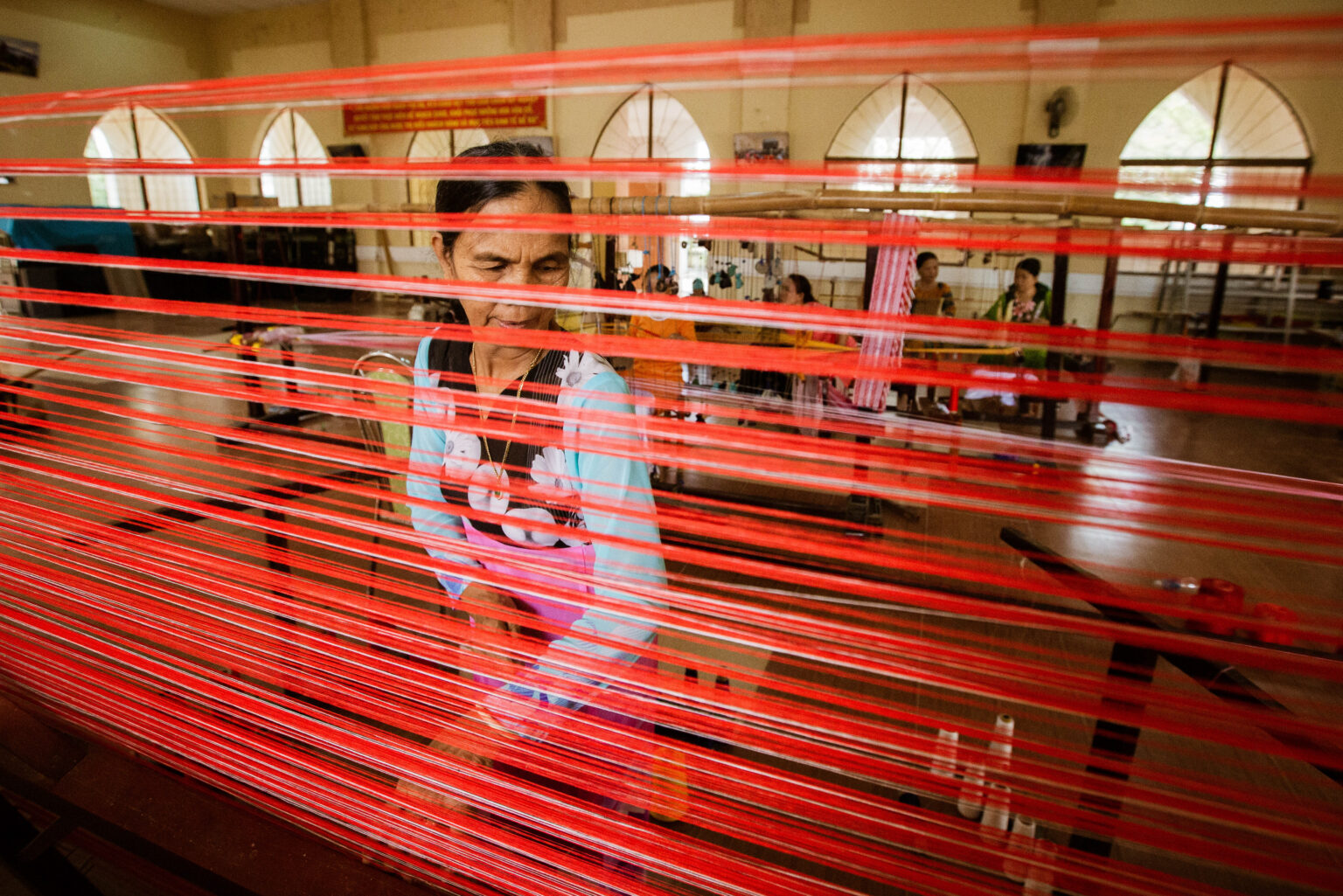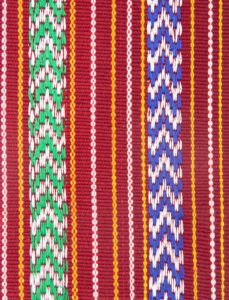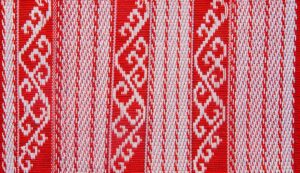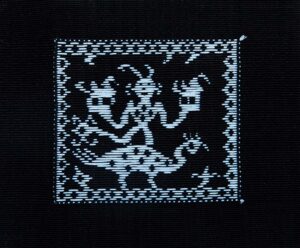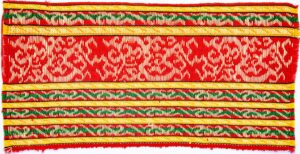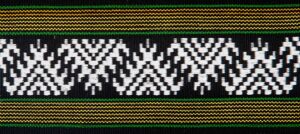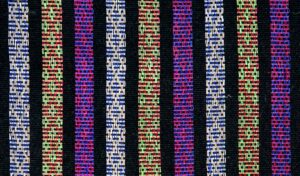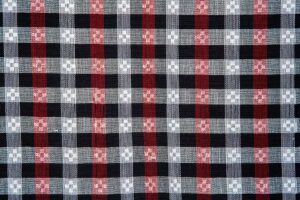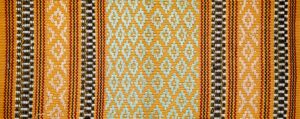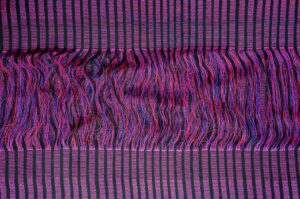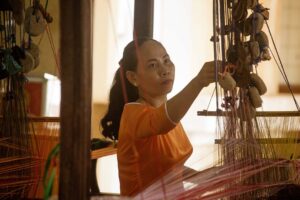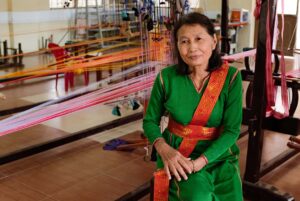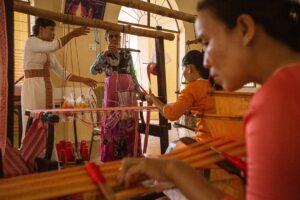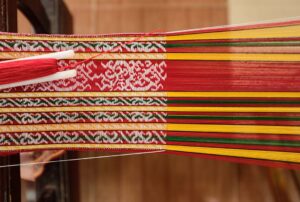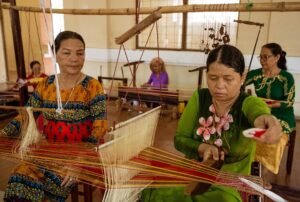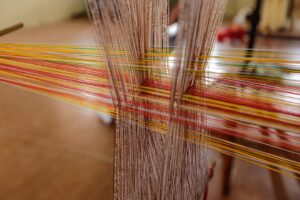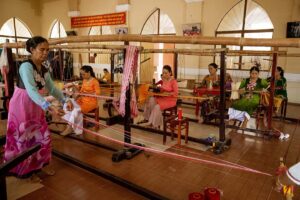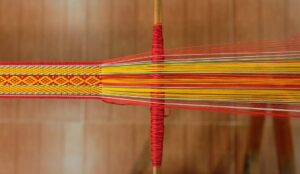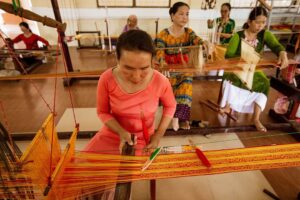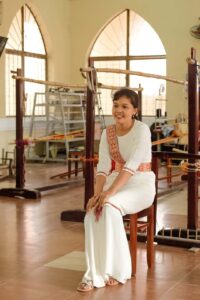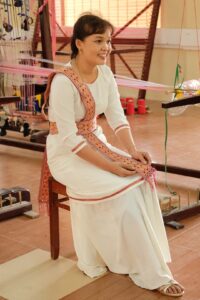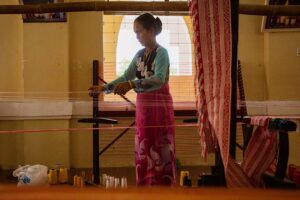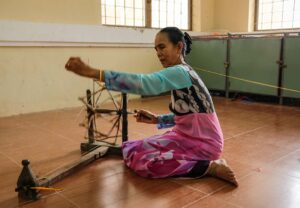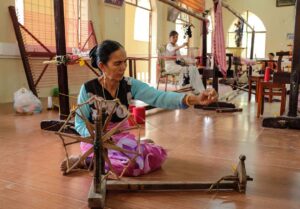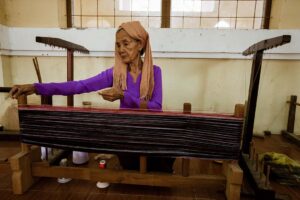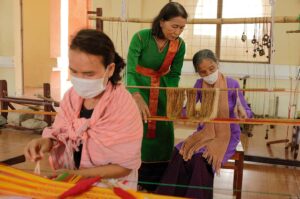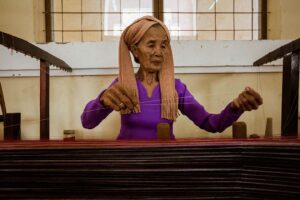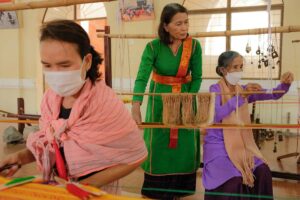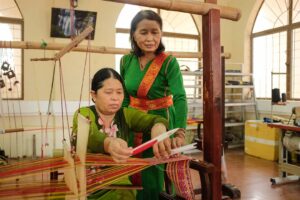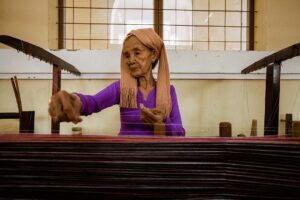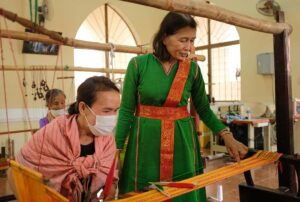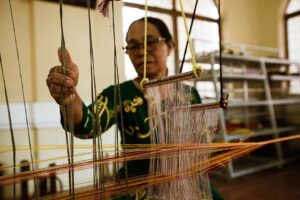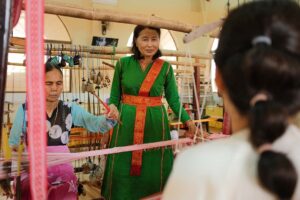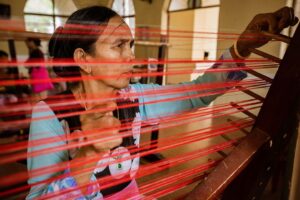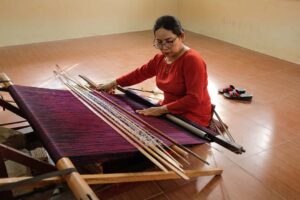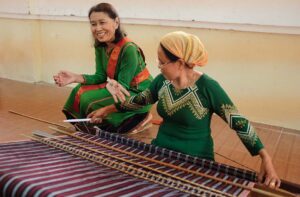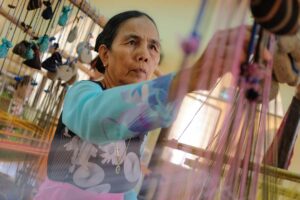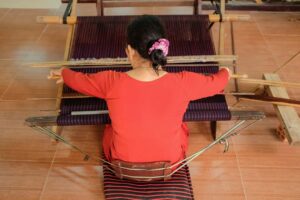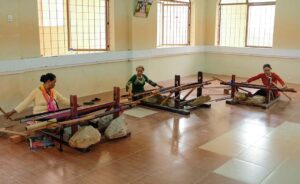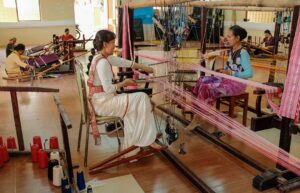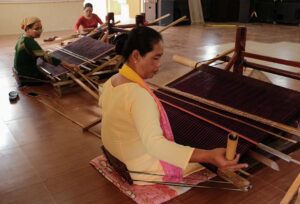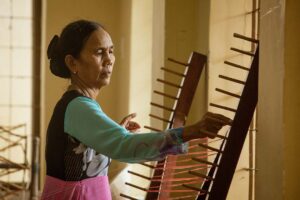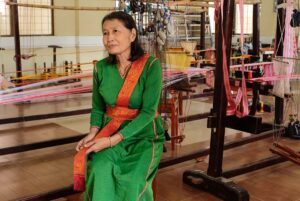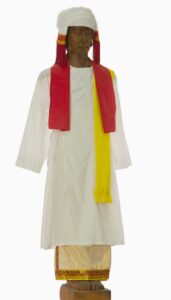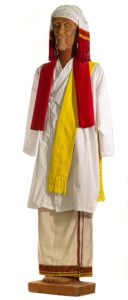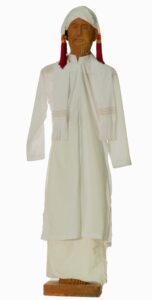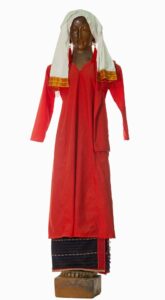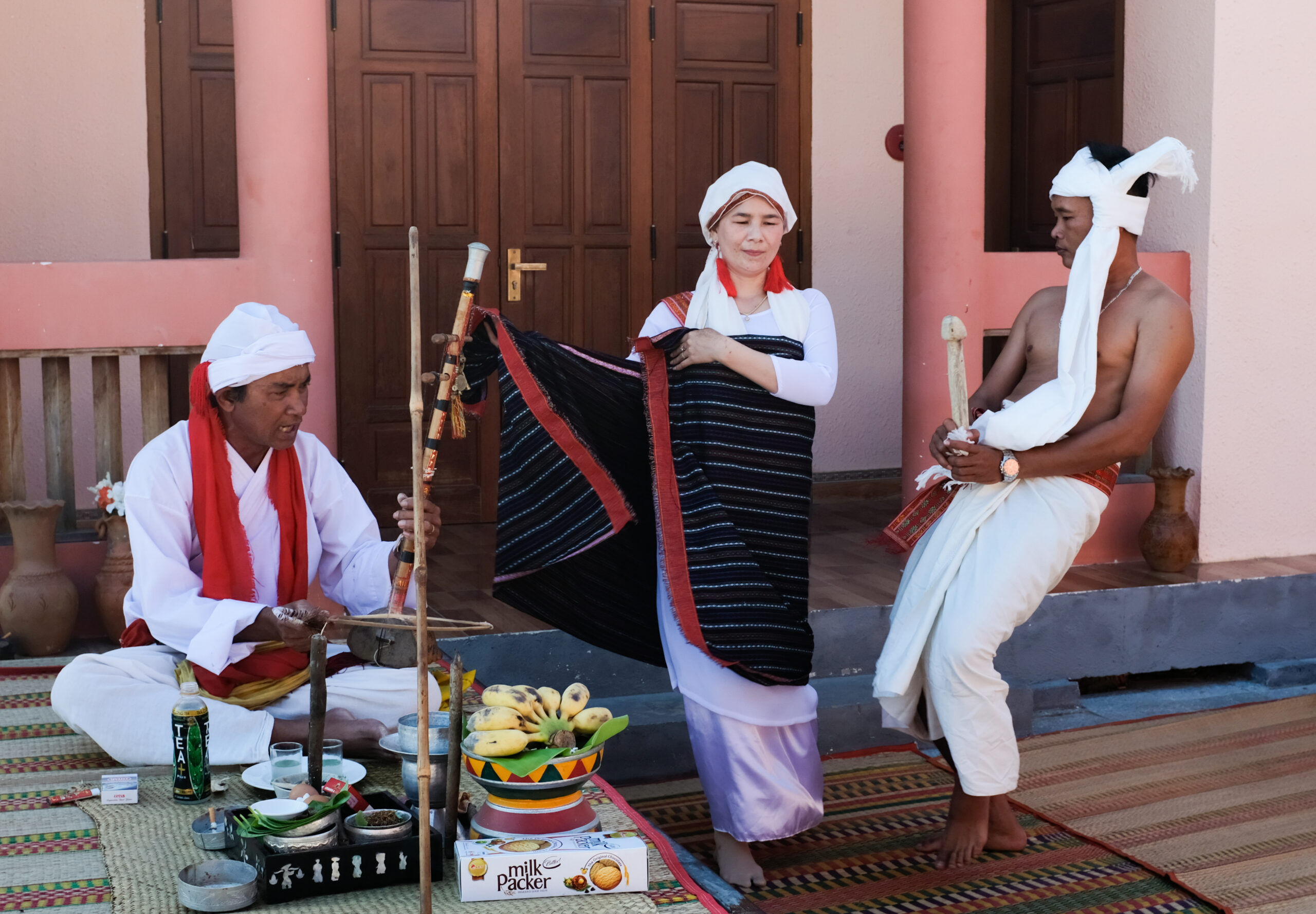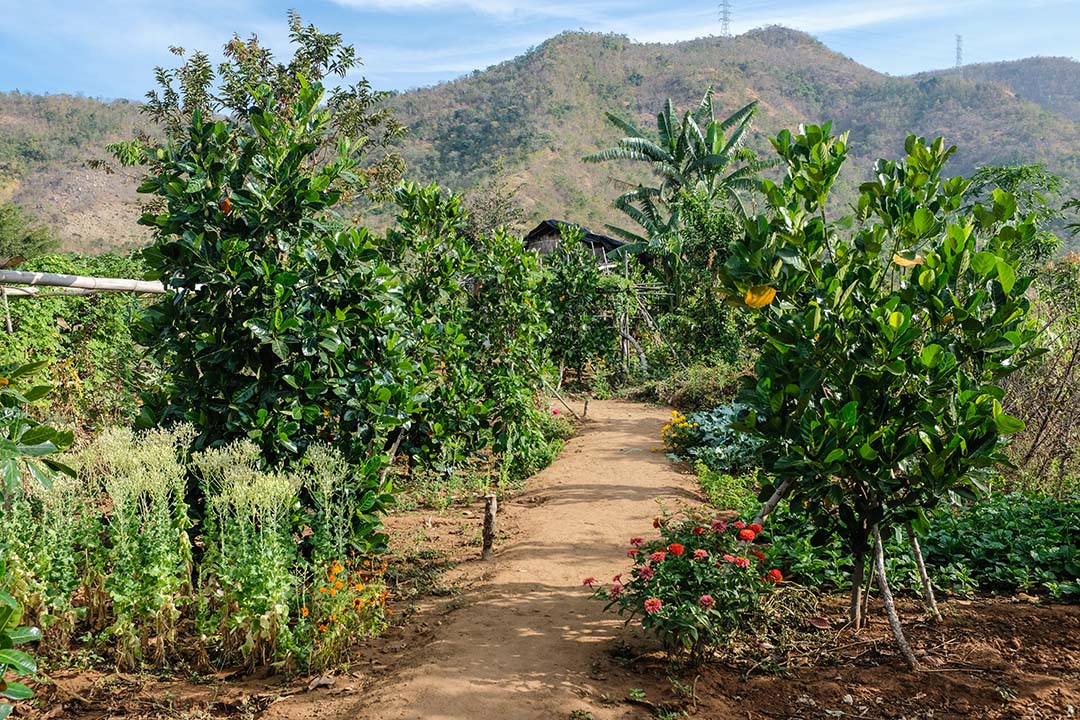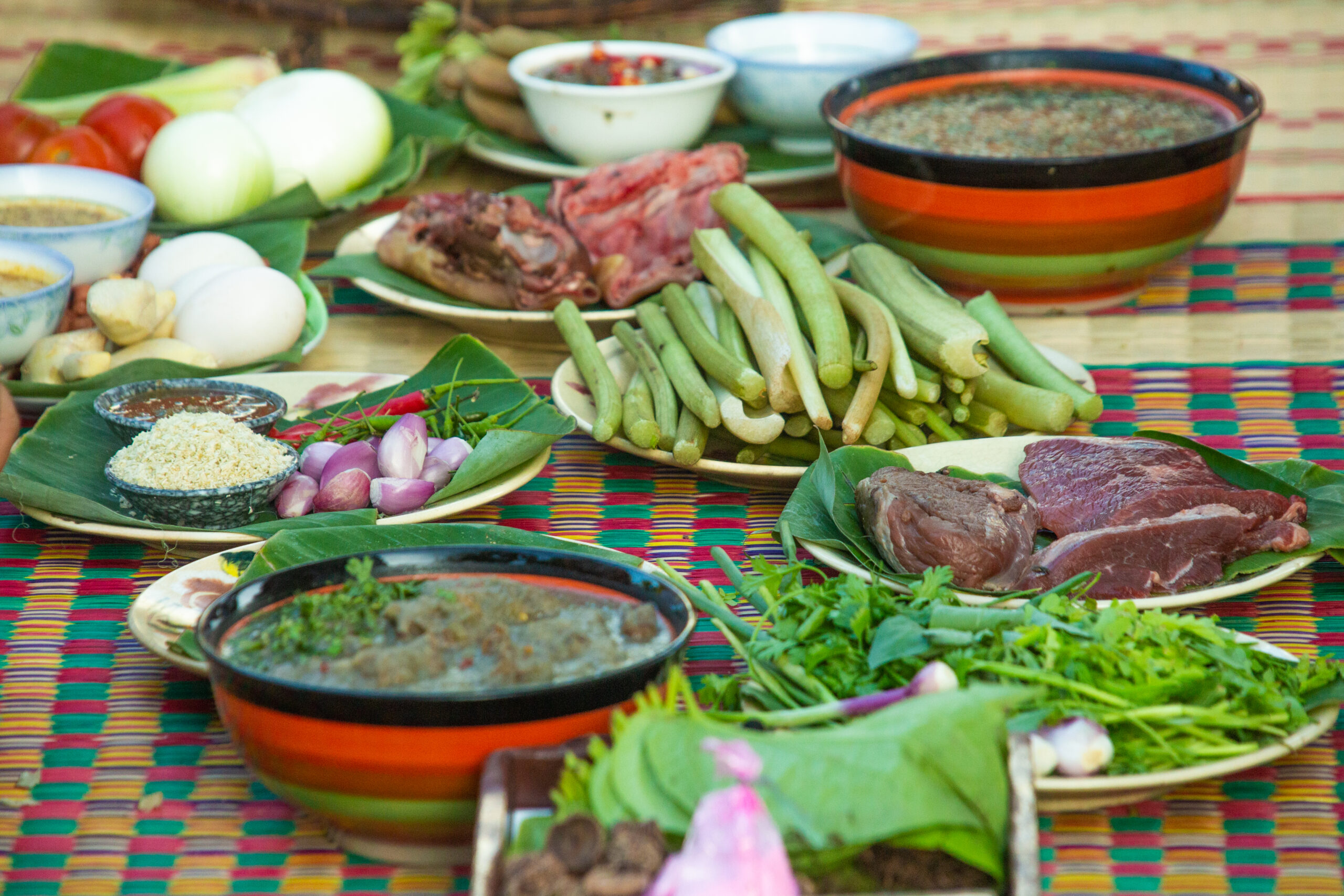Brocade patterns can be found on most traditional Cham costumes. From head scarves to belts, waists, wrists, skirt hems, and sometimes even a ceremonial dress are covered with brightly colored motifs inspired by familiar images in daily life. Brocade weaving has long held an important position in Cham families, mainly performed by women, to contribute to the family economy. This trace can be found in folk literature works such as Ariya Kabbon Muk Thruh Palei Poetry The Homeland's Nest, excerpt:
“Anuk throm hakak throm dwon
Happy New Year!
I'm so happy I'm so happy
Throm bita-it, straw bipagaih
I'm so happy
Mugru daum pioh tal hu pathang
The boat is in the water
Tol hu pathang muay jwai cakauh…”
Translation:
“I practice measuring and weaving.
The right book to teach girls
When I want to practice
Practice hard to become proficient.
I am looking for a smart person
Learn by heart and wait until you get married.
Remember to bring it for use.
When you have a husband, don't forget...”
Ms. Lam Nu Minh is currently the deputy director of the Cham My Nghiep Brocade Weaving Cooperative, in charge of technical and product aspects. She used to be a doctor, but when she retired, she decided not to open a private clinic but to collaborate with the Cooperative. Ms. Minh's mother recently passed away. When she was alive, her mother was a well-known brocade weaver. Ms. Minh shared:
“First, the person who wants to create a product must have a plan in advance, prepare how much thread to weave that product, how much floral thread, how much background thread. After setting up the loom, I then weave the flowers, then start weaving. Weaving the flowers is the most complicated step in the whole process because each type of pattern has its own way of weaving, if the weaving is wrong, the pattern will not take shape. To create a new pattern requires a lot of effort. So when I no longer do the right-handed job, I want to do something so that what my mother knows will not be lost, so that I can pass it on to my daughter in the future.”
The way of weaving – that is, the way of separating and folding threads to create patterns – is passed down from mother to daughter in the family. If a family stops weaving, the patterns in the family will be lost. Without efforts to synthesize, preserve and teach, the traditional motifs of Cham brocade will most likely only exist on finished products. Cham brocade weaving products are very diverse in function, but mainly have two main forms: long loom I love you so much produces narrow pieces of fabric, which can be used for skirt waistbands, scarf hems or belts; short loom I'm so happy creating large pieces of fabric used as scarves, skirts or as a fabric for clothing. Originating as a craft to serve domestic needs, the traditional patterns of Cham brocade have developed to the point where they can be used to indicate the gender, age, and social status of the wearer. Each pattern has its own story and purpose, and is generally understood in the community as a set of conventions with traditional values.
The story of village brocade patterns Chakleng introduced by Mr. Phu Van Ngoi and Ms. Lam Nu Minh. The images and stories also have the contribution and sharing of artisans and girls, sisters who are studying brocade weaving at My Nghiep Cooperative, Phuoc Dan town, Ninh Phuoc district, Ninh Thuan province including Dat Thi Nam, La Thi Xuan, Luu Thi Em, Luu Thi Kim Tuyen, Thach Thi Loan, Thien Thi My Thuan, Thien Thi Nga, Thuan Thi Trao, Truong Thi Quyen, Thiet Thi Trang, Quang Thi Cuc, Van Thi Bach, Van Thi Thang.
All information posted in the Connecting Heritage Digital Collection is contributed by the community and is for reference only. The Program is not responsible for any differences from the information stated in the Digital Collection and disclaims any liability arising from the use of information from this Collection. For more information, please visit Community Rules.

